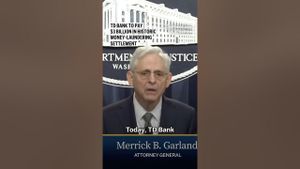A controversial photograph of police officers standing on the sacred steps of the Sabarimala temple has ignited outrage among devotees and led to immediate calls for accountability. The viral image shows around 28 policemen uniformed and standing with their backs facing the temple's inner sanctum, which is not only seen as disrespectful but also violates the age-old traditions upheld by the Sabarimala temple authorities.
This incident took place on Saturday, during the two-month Mandalam-Makaravilakku pilgrimage season, which saw the temple open for devotees from November 16. These officers were deployed to manage the significant daily influx of pilgrims, which is regulated to around 70,000 each day through prior online bookings. It is reported the photograph was taken after the temple had closed its doors for the day.
The Sabarimala temple, located in Kerala's Pathanamthitta district and perched at 3,000 feet above sea level, is renowned for its strict adherence to rituals and customs. To enter the holy site, pilgrims traditionally engage in 41 days of penance, during which they abstain from worldly pleasures. They carry the Irumudi, or sacred prayer kit, which is composed of offerings to be left at the shrine.
Devotees are particularly sensitive about temple practices, and the photograph, showing officers with their backs to the sanctum, goes against the conduct even temple priests adhere to, as they must also face the sanctum when descending the 18 sacred steps known as Pathinettampadi.
Given the uproar, the Additional Director General of Police (ADGP) S Sreejith has ordered a detailed report on the incident. A senior officer has been assigned to assess whether disciplinary action is warranted against the involved policemen. This scrutiny has also caught the eye of the Sabarimala Bench of the Kerala High Court, which oversees temple matters and has solidified itself as the arbiter of such issues.
The police action, or lack thereof, sends ripples of concern not only within the community of devotees but also raises questions about the respect for sacred traditions by law enforcement personnel. Various Hindu organizations have voiced their demand for accountability and have even called for formal apologies from the state police, emphasizing the need for personnel to educate themselves about temple customs before being assigned to such sensitive areas.
This incident is just the recent chapter of Sabarimala's lengthy battle over customs and the role of law enforcement within its hallowed grounds. Controversies surrounding the temple are not uncommon, especially relating to gender-related entrance restrictions and broader discussions about modernizing ancient practices. Whatever the outcome of this situation, it undoubtedly resonates within Kerala's socio-religious fabric, causing many to reflect upon the intersection of law enforcement and spirituality.
By only adhering to the rules of engagement carried by prior generations, individuals and institutions can navigate the nuances of tradition and modern expectations effectively. This incident, particularly, may lead to changes within the police department's approach to duty at sensitive spots like Sabarimala and potentially set new protocols aimed at restoring faith among pilgrims visiting sacred sites.



